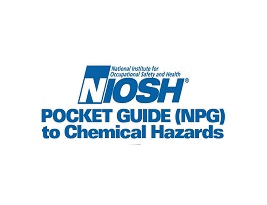Organic Solvents

Overview
Organic solvents are carbon-based substances capable of dissolving or dispersing one or more other substances.
Organic solvents can be carcinogens, reproductive hazards, and neurotoxins. Carcinogenic organic solvents include benzene, carbon tetrachloride, and trichloroethylene. Organic solvents recognized as reproductive hazards include 2-ethoxyethanol, 2-methoxyethanol, and methyl chloride. Organic solvents recognized as neurotoxins include n-hexane, tetrachloroethylene, and toluene. Many classes of chemicals are used as organic solvents, including aliphatic hydrocarbons, aromatic hydrocarbons, amines, esters, ethers, ketones, and nitrated or chlorinated hydrocarbons.
Organic solvents are used in many industries. They are used in paints, varnishes, lacquers, adhesives, glues, and in degreasing and cleaning agents, and in the production of dyes, polymers, plastics, textiles, printing inks, agricultural products, and pharmaceuticals. Millions of U.S. workers are exposed to organic solvents. The level of exposure depends upon the dose, duration, and work being done.
NIOSH recommends that employers use Hierarchy of Controls to prevent injuries. If you work in an industry that uses organic solvents, please read chemical labels and the accompanying Safety Data Sheets for hazard information. Visit NIOSH’s page on Managing Chemical Safety in the Workplace to learn more about controlling chemical workplace exposures.
The following resources provide information about occupational exposure to organic solvents.
NIOSH Chemical Resources
Related NIOSH Resources
- NIOSHTIC-2 search results on organic solvents—NIOSHTIC-2 is a searchable database of worker safety and health publications, documents, grant reports, and journal articles supported in whole or in part by NIOSH
- NIOSH Worker Health Study Summaries — The NIOSH Worker Notification Program notifies workers and other stakeholders about the findings of research studies.
- Occupational Health Guidelines for Chemical Hazards—DHHS (NIOSH) No. 81-123. These guidelines contain technical information about chemical hazards to workers, employers, and safety and health professionals.
- Rubber Products Manufacturing Industry: Special NIOSH Hazard Review—DHHS (NIOSH) No. 93-106. Excess deaths from bladder, stomach, lung, hematopoietic, and other cancers have occurred among workers involved in the manufacture of rubber products. These workers may also risk adverse respiratory effects, dermatologic effects, reproductive effects, injuries, and repetitive trauma disorders.
Selected Publications
- 2-Nitropropane (2-NP)– DHHS (NIOSH)No. 80-142. As a confirmed animal carcinogen, 2-NP has the potential to cause cancer in humans. This document summarizes the cancer studies of 2-NP in laboratory animals and its toxic effects in humans.
- Preventing Adverse Health Effects from Exposure to Dimethylformamide (DMF)– DHHS (NIOSH) No. 90-105. This describes engineering controls, good work practices, and personal protective equipment (PPE) recommended for controlling exposures to DMF by inhalation and skin contact.
- Preventing Death from Excessive Exposure to Chlorofluorocarbon 113 (CFC-113)– DHHS (NIOSH) No. 89-109. A number of workers have died recently as a result of exposure to CFC-113 in confined spaces or in areas with insufficient ventilation. These workers were apparently unaware that CFC-113 might generate vapor concentrations sufficient to cause death by cardiac arrhythmia or asphyxiation.
Criteria Documents (Criteria for a Recommended Standard)
Criteria documents are developed and recommended by NIOSH for preventing disease and hazardous conditions in the workplace. These documents generally contain a critical review of the scientific and technical information available on the prevalence of hazards, the existence of safety and health risks, and the adequacy of methods to identify and control hazards.
- Alkanes (C5-C8) DHHS (NIOSH) No. 77-151
- Benzene DHHS (NIOSH) No. 74-137
- Benzenethiol DHHS (NIOSH) No. 78-213
- Carbon Tetrachloride DHHS (NIOSH) No. 76-133, (Revised Abstract) DHHS (NIOSH) No. 76-133r
- Chlorobenzene DHHS (NIOSH) No. 93-102
- Chloroform DHHS (NIOSH) No. 75-114
- Cyclohexanethiol DHHS (NIOSH) No. 78-213
- 2-Diethylaminoethanol DHHS (NIOSH) No. 96-104
- Ethylene Dichloride (1,2-Dichloroethane) DHHS (NIOSH) No. 78-211
- Ethyl Ether DHHS (NIOSH) No. 93-103
- Ethylene Glycol Monobutyl Ether DHHS (NIOSH) No. 90-118
- Ethylene Glycol Monobutyl Acetate DHHS (NIOSH) No. 90-118
- Ethylene Glycol Monoethyl Ether DHHS (NIOSH) No. 91-119
- Ethylene Glycol Monoethyl Ether Acetate DHHS (NIOSH) No. 91-119
- Ethylene Glycol Monomethyl Ether DHHS (NIOSH) No. 91-119
- Ethylene Glycol Monomethyl Ether Acetate DHHS (NIOSH) No. 91-119
- Glycidyl Ethers DHHS (NIOSH) No. 78-166
- Isopropyl Alcohol DHHS (NIOSH) No. 76-142
- Ketones DHHS (NIOSH) No. 78-173
- Metalworking Fluids DHHS (NIOSH) No. 98-102
- Methyl Alcohol DHHS (NIOSH) No. 76-148
- Methylene Chloride DHHS (NIOSH) No. 76-138
- Phenol DHHS (NIOSH) No. 76-196
- Propylene Glycol Ethers and Their Acetates DHHS (NIOSH) No. 91-103
- Refined Petroleum Solvents DHHS (NIOSH) No. 77-192
- 1,1,2,2-Tetrachloroethane DHHS (NIOSH) No. 77-121
- Thiols, n-Alkane Mono DHHS (NIOSH) No. 78-213
- Toluene DHHS (NIOSH) No. 73-11023
- 1,1,1-Trichloroethane (Methyl Chloroform) DHHS (NIOSH) No. 76-184
- Trichloroethylene DHHS (NIOSH) No. 73-11025
- Xylene DHHS (NIOSH) No. 75-168
Current Intelligence Bulletins (CIBs)
CIBs review and evaluate new and emerging information about occupational hazards. A CIB may draw attention to a previously unrecognized hazard, report new data on a known hazard, or disseminate information about hazard controls.
- Carcinogenic Effects of Exposure to Propylene Oxide CIB#51
- Chloroethanes CIB#27
- Chloroform (DDM) CIB#9
- Ethylene Dibromide and Disulfiram Toxic Interaction CIB#23
- Ethylene Dibromide (EDB) CIB#3
- Ethylene Dibromide (EDB) (Revised) CIB#37
- Ethylene Dichloride (1,2-Dichloroethane) CIB#25
- Glycol Ethers: 2-Methoxyethanol and 2-Ethoxyethanol CIB#39
- Hexamethylphosphoric Triamide (HMPA) CIB#6
- Methylene Chloride CIB#46
- Monohalomethanes: Methyl Chloride CH3Cl, Methyl Bromide CH3Br Methyl Iodide CH3I CIB#43
- 2-Nitropropane CIB#17
- Organic Solvent Neurotoxicity CIB#48
- Tetrachloroethylene (Perchloroethylene) CIB#20
- Trichloroethylene (TCE) CIB#2



